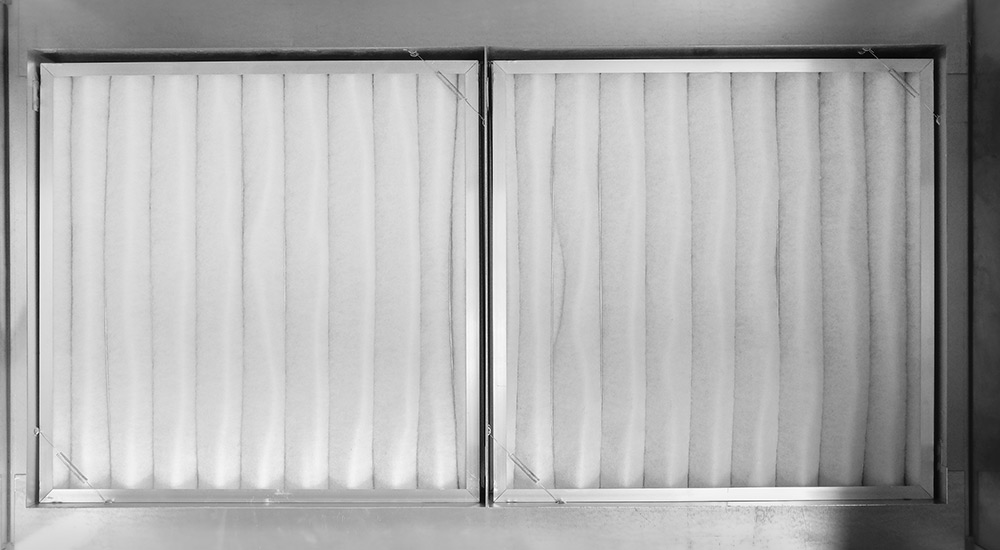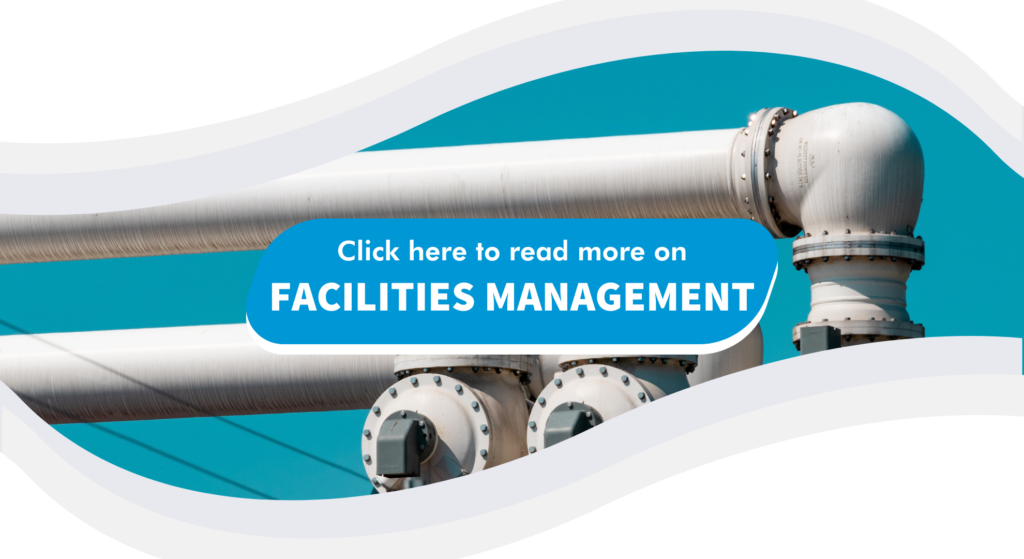Air Filters
In today’s fast-paced workplaces, amidst pressing deadlines and high productivity, one critical element often goes unnoticed – the quality of the air we breathe.
Although it might not be as noticeable as office equipment and decor, the air we inhale within our workplaces plays a pivotal role in our health, well-being, and overall productivity. This fundamental aspect, often overlooked, is a core facet of Facilities Management.
In this article, we uncover the significance of air handling in the workplace, looking at how it affects not only the physical health of employees but also the efficiency and sustainability of businesses. Through this exploration, we shed light on the pivotal role that Facilities Management and advanced air filtration solutions play in cultivating healthier and more productive work environments.
Proper air handling is far more than just a technicality in workplace management – it’s a fundamental pillar upon which the health and productivity of employees stand.
Understanding ISO 16890 Testing
Air handling is a multifaceted process integral to various industries, involving the movement, distribution, and regulation of indoor and outdoor air. It encompasses ventilation, heating, cooling, filtration, humidification, dehumidification, and control of air quality. This comprehensive approach ensures that the air within a specific environment is of high quality, maintaining optimal conditions for the occupants or processes within that space.
This complex system of air handling caters to different industries in distinct ways, shaping their environments and operations in a variety of customised approaches.
Significance of Air Handling in Different Industries
Healthcare Industry
In healthcare facilities, air handling systems are vital for maintaining sterile environments and preventing the spread of infections. Proper ventilation and air filtration are crucial in places like hospitals, clinics, and laboratories, where patients, staff, and sensitive equipment are highly susceptible to airborne contaminants. Air handling systems help control pathogens and maintain a safe atmosphere for both patients and healthcare professionals.
Manufacturing and Industrial Sector
Industries relying on precision and consistency, such as electronics, pharmaceuticals, and food processing, require controlled environments. Air handling systems play a pivotal role by regulating temperature and humidity, ensuring dust and contaminants are filtered out. This is vital for maintaining the quality of products and preventing equipment damage, especially in cleanrooms and manufacturing facilities where even microscopic particles can disrupt processes.
Commercial Buildings
Air handling systems in offices, shopping centres, hotels, and other commercial spaces enhance the comfort and well-being of occupants. They regulate temperature, control humidity, and filter pollutants, ensuring a pleasant atmosphere. Energy-efficient systems not only create a better environment but also contribute to cost savings for businesses.
Education Sector
Schools, colleges, and universities benefit from efficient air handling systems to create conducive learning environments. Proper ventilation and air quality contribute to the health of students and staff, creating an atmosphere better suited for concentration and academic performance.

Data Centres
Data centres, housing sensitive electronic equipment, rely heavily on precise air handling. Maintaining an optimal temperature and humidity level is critical to prevent overheating and equipment failures. Air filtration systems are employed to keep out dust and contaminants, ensuring the continuous and reliable operation of servers and networking devices.
Hospitality Industry
Hotels and restaurants utilise air handling systems to maintain a pleasant atmosphere for guests. Proper ventilation and air filtration enhance the overall experience, ensuring that guests are comfortable and safe from allergens and pollutants.
By tailoring these systems to specific industry requirements, businesses can create environments that are conducive to health, productivity, and the overall success of their operations.
The impact of poor air quality on employees’ health and well-being
Poor air quality in workplaces goes beyond being a minor inconvenience; it profoundly affects employees’ health. Exposure to indoor pollutants like dust and pollen can cause allergies, asthma, and chronic respiratory issues. Allergies often lead to common symptoms such as sneezing and watery eyes. Inadequate ventilation hampers cognitive functions, impacting concentration and causing fatigue and memory problems. Long-term exposure increases the risk of severe illnesses like respiratory diseases. Uncomfortable air quality also elevates stress levels, affecting emotional well-being and job satisfaction.
Recognising these risks highlights the crucial need for proper air handling systems and effective filtration. Investing in clean indoor air isn’t just about health; it’s the foundation for a productive workforce, creating environments where individuals can thrive both personally and professionally.
Common pollutants found in indoor air and their sources
Indoor air pollution is a complex issue influenced by various factors. Understanding the common pollutants and their sources is essential for mitigating health risks and ensuring a healthy indoor environment. Here are some prevalent indoor air pollutants and where they originate:
Particulate Matter (PM2.5 and PM10)
Sources: Dust, pollen, pet dander, mould spores, and particles from cooking and tobacco smoke.
Health Impact: Respiratory problems, allergies, and aggravation of pre-existing conditions.
PM1
Sources: Tobacco smoke, fireplaces, burning candles, frying foods.
Health Impact: Cardiovascular and respiratory effects.
Volatile Organic Compounds (VOCS)
Sources: Cleaning products, paints, varnishes, disinfectants, air fresheners, and office equipment like printers and copiers.
Health Impact: Eye, nose, and throat irritation, headaches, dizziness, and long-term exposure can cause damage to organs.
Carbon Monoxide (CO)
Sources: Incomplete combustion from gas stoves, heating systems, tobacco smoke, and car exhaust in enclosed spaces.
Health Impact: Headaches, dizziness, nausea, and, in severe cases, can be fatal.
Formaldehye
Sources: Furniture, carpets, particleboard, plywood, and some cleaning products.
Health Impact: Eye, nose, and throat irritation, allergies, and potential carcinogenic effects with prolonged exposure.
Radon
Sources: Soil under buildings, especially in areas with high uranium content in the ground.
Health Impact: Lung cancer; radon is the second leading cause of lung cancer after smoking.
Mould and Mildew
Sources: Dampness, water leaks, and high humidity provide ideal conditions for mould growth on walls, ceilings, and carpets.
Health Impact: Allergies, respiratory issues, and irritation of eyes, nose, and throat.
Tobacco Smoke
Sources: Smoking indoors releases thousands of harmful chemicals into the air.
Health Impact: Respiratory problems, increased risk of cancer, especially for passive smokers (non-smokers exposed to smoke). Identifying and minimising exposure to these pollutants is crucial for maintaining a healthy indoor environment. Proper ventilation, regular cleaning, and using HEPA filters where appropriate, can significantly reduce indoor air pollution and its associated health risks.

The Role of Facilities Management
What is Facilities Management?
Facilities management is the multidisciplinary approach to ensuring the functionality, safety, comfort, and efficiency of the built environment – encompassing everything from buildings and infrastructure to people and processes. It involves integrating people, place, process, and technology to optimise the functionality of an organisation. At its core, facilities management strives to create an environment that strategically aligns with the organisation’s objectives while providing a safe and productive space for its occupants.
The link between Facilities Management and air handling
At the heart of facilities management lies the vital responsibility of managing indoor air quality through effective air handling systems. The connection between facilities management and air handling is paramount, especially in environments where the health and well-being of occupants are non-negotiable, such as healthcare facilities, commercial spaces, educational institutions, and industrial complexes. Facilities managers play a pivotal role in ensuring that indoor air quality meets required standards, creating an environment conducive to the health and productivity of the occupants.
Facilities managers play a central role in air handling, collaborating with HVAC specialists to design tailored systems based on building requirements. They oversee regular maintenance, ensuring filters, fans, and ducts are functioning optimally. Utilising advanced monitoring technologies, they track air quality parameters and adjust ventilation and filtration processes as needed. Additionally, managers stay updated on regulations and standards, ensuring compliance for a healthy indoor environment.
Achieving Cost Savings and Energy Efficiency with proper aid handling and filtration
Implementing proper air handling and filtration systems not only ensures a healthier workplace but also translates into substantial cost savings for businesses. By efficiently regulating indoor air quality, companies reduce the risk of employee sick days, increase productivity, and enhance overall workforce well-being.
Well-maintained filtration systems significantly prolong the lifespan of equipment and reduce energy consumption by optimising ventilation. Lower maintenance costs, reduced energy bills, and enhanced productivity collectively contribute to substantial financial savings in the long run.
Proper air handling isn’t just an investment in health; it’s a strategic move that pays dividends by fostering a healthier bottom line for businesses.
Westbury: Pioneering Air Filtration Solutions
With a rich history dating back to 1969, Westbury is an industry leader in the field of air filtration.
What sets Westbury apart is our customised approach to solving air quality challenges across diverse industries through our expertise in ventilation engineering. Our tailored solutions address these specific needs, offering businesses not just generic products, but precisely engineered systems.
By analysing the distinct demands of each industry, we deliver solutions that ensure optimal air quality and safety, with a commitment to client satisfaction.
For further advice on how filter test standards have evolved and for a clear & honest conversation about the points discussed above, contact Westbury today.



